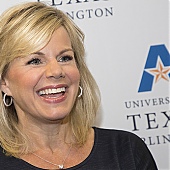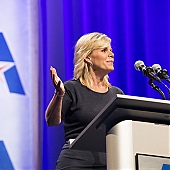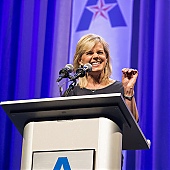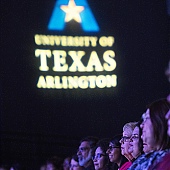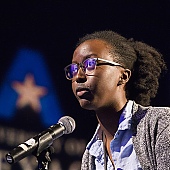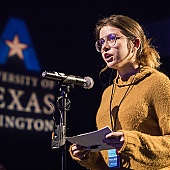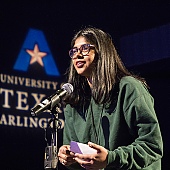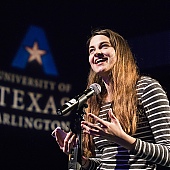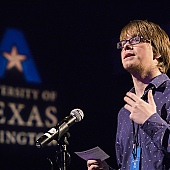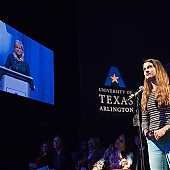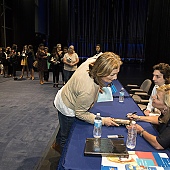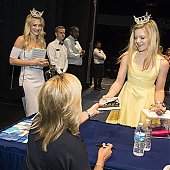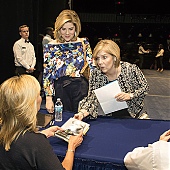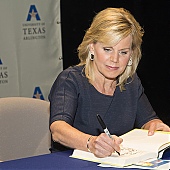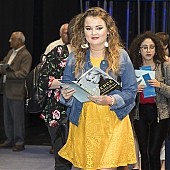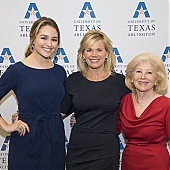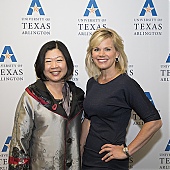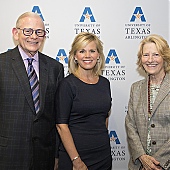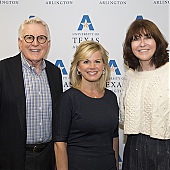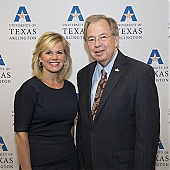Illustration by Sean McCabe
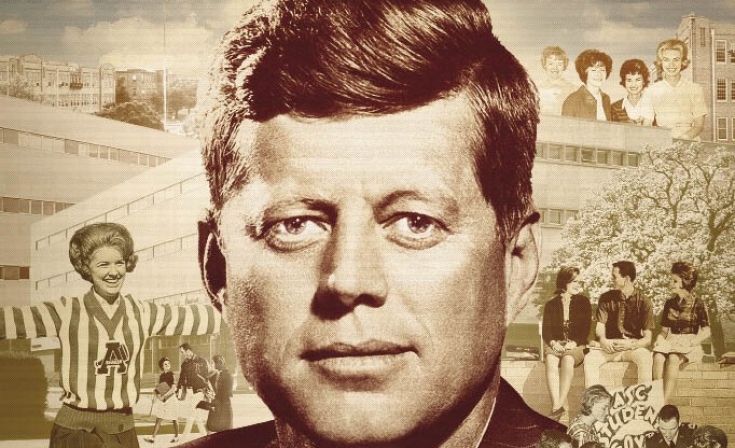
Words of Anguish
Unread for almost a half-century, a rediscovered essay collection reveals the despair and anger felt by UT Arlington students four days after John F. Kennedy’s assassination.
Duane Keilstrup was doing something he hadn’t done in years—digging through the mounds of files swallowing up his home office—when he found them, peeking from a manila folder, as crisp as the day he put them there nearly 50 years before. Sixty-five essays, single-spaced and double-spaced, most signed, and all handwritten in sprawling cursive by freshmen and sophomores four days after President John F. Kennedy was shot Nov. 22, 1963, in downtown Dallas.
Dr. Keilstrup was 28 and an assistant professor of German at what was then Arlington State College when he suggested that students in his three classes jot down their thoughts about the assassination, partly as a cathartic experience and partly because Keilstrup was curious about what they were thinking.
He promised no grades, no analysis, and no discussion. He didn’t read the essays until weeks later, scribbling a few notes along some pages. Then he stashed them away, uncovering them last year only because his wife, Glenda, asked him to please do something about the potential fire hazard building in his office.
POWER OF THE PEN
Professor Emeritus Duane Keilstrup recently uncovered 65 essays his students wrote shortly after the JFK assassination.
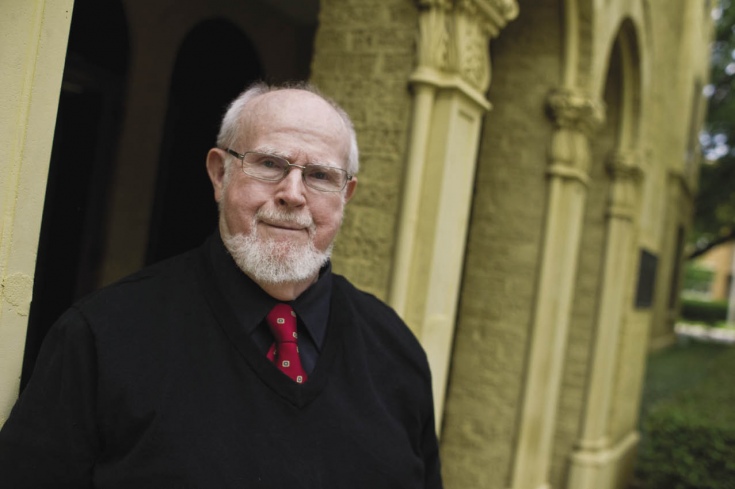
“Time-wise, for him to have finally cleaned out his files and found the essays right before the 50th anniversary was quite a coincidence,” Glenda says of her husband, who retired from UT Arlington in 1992. “Everything just started happening after that.”
RAW EMOTIONS
After an article appeared in the Fort Worth Star-Telegram, representatives of The Sixth Floor Museum at Dealey Plaza in Dallas contacted Keilstrup. Home to more than 40,000 artifacts surrounding the assassination, the museum commands the top two floors of the former Texas School Book Depository, where Lee Harvey Oswald is believed to have fired the fatal shots.
The officials were eager to view the writings. When Keilstrup brought them over, associate curator Stephen Fagin slipped on a pair of snow-white gloves and methodically flipped the pages. He read submission after submission until he finally stood up and declared that he couldn’t believe what he was seeing.
“The first thing I thought was, ‘Wow, what a benefit it would be to have something like this at the museum that provides firsthand perspectives of how young people responded to the assassination.’ This is the first donation from a classroom environment where students as part of a paper were asked to respond with their thoughts and feelings in the immediate aftermath of the assassination. It’s fascinating.”
The essays present a cavalcade of raw emotions molded by shock, sadness, and disbelief. Nuances could be lifted straight from today’s blogosphere: the easy availability of firearms, a societal condoning of violence, how feuding Democrats and Republicans created an atmosphere of hateful discourse.
“The nation is profoundly shocked by perhaps the most evil crime in American history. As a citizen of Dallas, I feel utter shame, sadness, and disbelief that such a tragedy could take place in my city.”
“Efforts must be renewed to keep weapons of any kind from those who would use them wrongly,” student Paul Pryor wrote. “We must do this without endangering the right of the responsible citizens.”
The essays cited irrational forces and influences prevalent at the time, God’s will to bring the nation closer to Him, and hate in the Dallas media, which several students surmised was what led Oswald to believe he would be safe.
“What is this new America that suddenly has no respect for the dignity and office of the chief executive?” one student penned.
“What causes a person to take another’s life no matter how despicable his crime in a country where our liberty and justice are our mainstays of the past and our basis for the future?” wrote another.
And this: “The nation is profoundly shocked by perhaps the most evil crime in American history. As a citizen of Dallas, I feel utter shame, sadness, and disbelief that such a tragedy could take place in my city. As long as I live, I shall never forget that terrible day.”
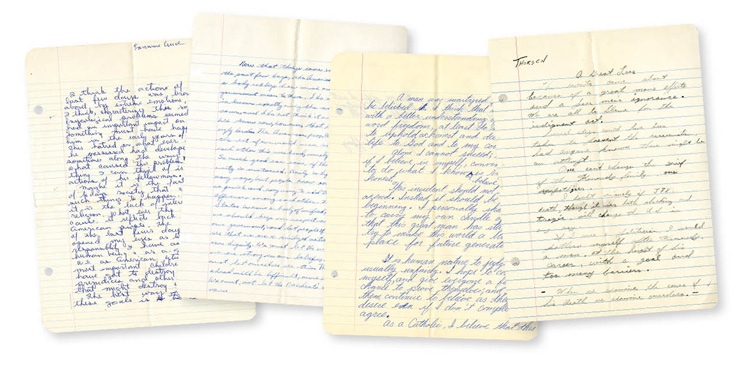
LIKE TURTLES IN SHELLS
In 1963 Arlington State College was a rapidly growing institution with 10,000 students and recently achieved four-year status. The students’ politics paralleled the sentiment of many Texans who respected the presidency but disliked Kennedy despite his choice of Lyndon B. Johnson as a running mate.
Keilstrup likened student reaction after the assassination to turtles escaping into their shells for safety, waiting for trouble to dissipate. He recalls walking the campus and seeing clumps of students, all with frightened or perplexed looks, huddled in hot discussion.
No student refused the optional assignment, Keilstrup remembers, and the mood in all three classes was solemn, with few talking above a whisper.
“It was a terrible time,” says David Rowntree, who was 19 when Kennedy was shot. He can’t recall what he wrote in his own essay in Keilstrup’s class. Among those who signed his paper, Rowntree began most of his paragraphs with “Why.” He shared the sentiment of many of his classmates, that the “real” killer would never be found and their lives would never be the same.
“As long as the collective conscious of mankind condones violence for any reason, we will have to suffer its consequences in every phase of human life,” he wrote.
“A lot of people on campus hated the Kennedys,” says Rowntree, now 69 and living in Concord, Calif. “They didn’t like JFK or his brother and felt the family were political opportunists. I remember being in another class when someone walked in to say that Kennedy had been shot. Everyone started talking at once, but one guy stood up and said, ‘Good, we should have impeached him anyway.’ I wanted to run up and grab him by the throat and shake him.”
A NEW AMERICA?
Fagin and his colleagues in The Sixth Floor Museum’s collections department are scanning, digitizing, and categorizing the essays, which will join videos, photos, and oral histories in the museum’s archives.
He says many who lived through the period believe the assassination was a watershed moment that ushered in the violence, skepticism, and loss of innocence of the 1960s. He sees the essays as representing “history in the making” and shining an intimate light on students trying to make sense of a tragedy in their own backyard.
“They’re trying to justify it, trying to defend or theorize what we can do to change the country. Then there were the ones who asked about this new America that was emerging. That was a very telling point because there is this recognition that things are changing and will continue to change. There are the deaths of Bobby Kennedy and Martin Luther King Jr. There’s Vietnam.”
As one student wrote, “The only thing that has come into focus from the past few days is the American people as a body realize how much our president and government mean to them. I do not think it’s known why the assassination came, and I do not think it will be known. We do know that hatred causes ugly deeds.”
Keilstrup, now 78, was named a professor emeritus in 1992 after 37 years on the UT Arlington faculty. He stays busy producing golden age radio shows and is the author of The Christian Professor in the Secular University: Singing & Soaring on Paths of Joy.
“To have the essays in the museum is very humbling,” he says. “I’m just very, very grateful that they were able to preserve the thoughts of my students.”
Yet those thoughts almost remained hidden in that manila folder.
“I knew I had them somewhere. As soon as I saw them, I knew it was time to tell someone. It would be incredibly selfish for me to keep them for myself and not let others experience them.”
Go to library.uta.edu/jfk to view images from a UT Arlington Library photo exhibit of President Kennedy’s visit to Fort Worth.
Also in this issue: Marking History, a story about the JFK Tribute in downtown Fort Worth.
